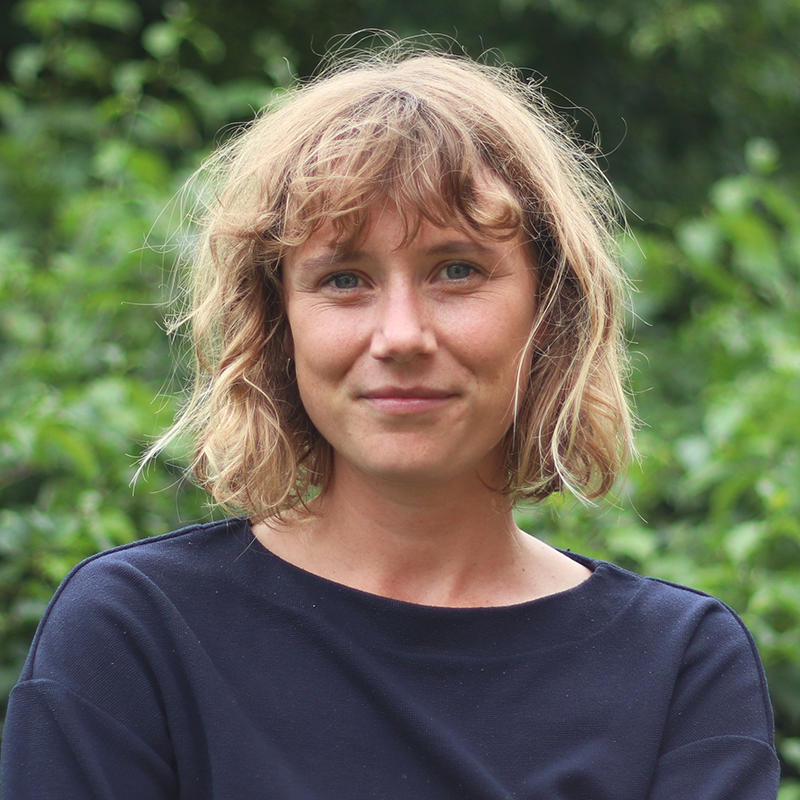The interconnected city:
A nature-inclusive city allows species to thrive
Tamara Streefland
08/12/2021
In the year 2050, we discovered that our cities dramatically improved once we redefined our relationship with nature. Our cities became dense, green oases that are home to a multitude of species, and our governments are active stewards of the natural ecosystem. This article is the first in a series of three where we depict what our future cities and regions look like, and how we relate to them.
You open your eyes. It’s 8 am, so you step out of bed. With a freshly brewed cup of tea, you set the table for the rest of your household. You’ve been living here for almost a decade, and truly enjoy being part of such a caring community — things get implemented quickly when you do them together. Outside, it’s a perfect, crisp spring day. Listening to the choir of birds, it’s hard to imagine the cacophony of engines that once dominated roads. Now, the street has become the place to be. On the way to the local bicycle docking station, you strike up a conversation with an elderly woman tending to the plants growing on a green facade. It is indeed a long way from when the city core was more of a theme park for weekend tourists than a place to live. As you walk the last few meters to the office alongside a pond filled with many different types of fish, you pause to admire a gnarled tree. You’ll remember to look it up later during a lunchtime walk with colleagues.
Looking back from the year 2050, it is surprising that so many humans once thought that nature and the Earth were things to be controlled, dominated, and exploited. In the Western world, such ideas might be traced all the way back to Aristotle's hierarchy of beings. With the colonial expansion of European powers and the rise of capitalism, nature was treated as a commodity and resources were extracted for private consumption on a new, planetary scale.
The results were disastrous. Global climate change reached a crisis point in the 2020s, sooner than many people had anticipated. Ecosystems were collapsing. We saw animal populations decline 68% between 1970-2016, and forests covered just 31% of global land area in 2020. Decades of destroying habitats to cultivate oil palms, plant soy for meat production, and build cities ultimately created unlivable conditions through climate change, pollution, and overexploitation. Inequalities were exacerbated as marginalized populations inside and outside our cities were hit hardest.
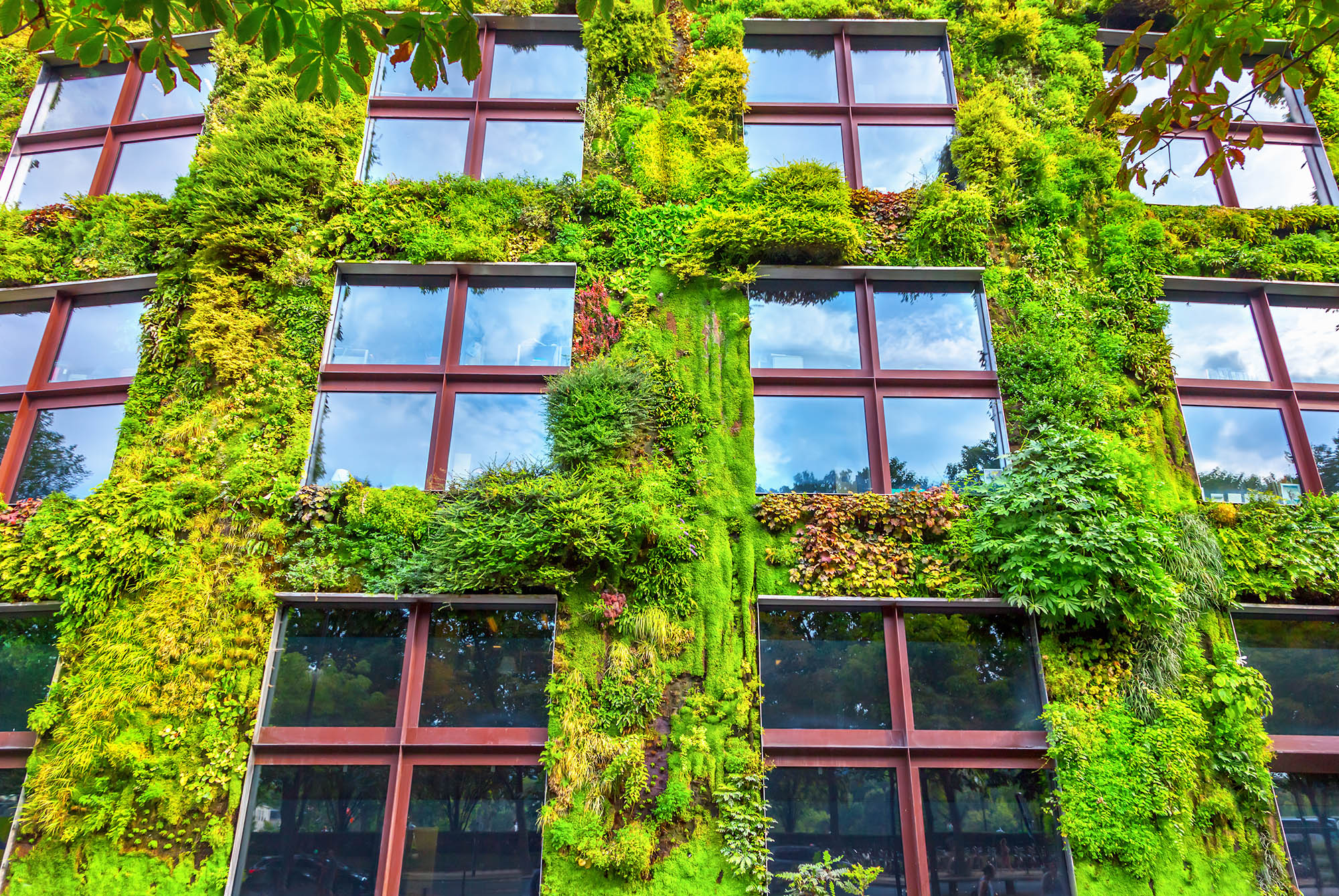
But, organizations, companies, and governments worked hard to inspire and create change. They recognized that cities had an outsized impact even though they occupied just 3% of the earth’s land surface. These places that were full of creativity and diversity were also responsible for the negative impacts that was ravaging our planet. Envisioning a future where all people and other species were thriving was the first step towards actually enabling changes.
At Metabolic, we believe that sharing a tangible vision of a future, one where we care for our planet, our communities and our resources, opens up possibilities for how we can collectively act to make these cities a reality.
Nature is an ingrained aspect of cities in the future
Today, in 2050, our relationship with nature has drastically changed. We see the health of other species and ecosystems as equally important to our own. Instead of putting humans on a pedestal as masters of the universe, we recognize how interconnected we are. We deeply consider nonhuman perspectives when building our urban habitats, including what other species need to thrive. After all, we understand that the health of the ecosystem underpins all human well-being. This is not new, as we have always lived in symbioses. Microorganisms in our gut keep us healthy, fungi decompose organic materials to create healthy fertile soils, insects pollinate our plants and protect crops from pests. Today, we appreciate and facilitate these relationships rather than ignore, destroy, or commodify them.
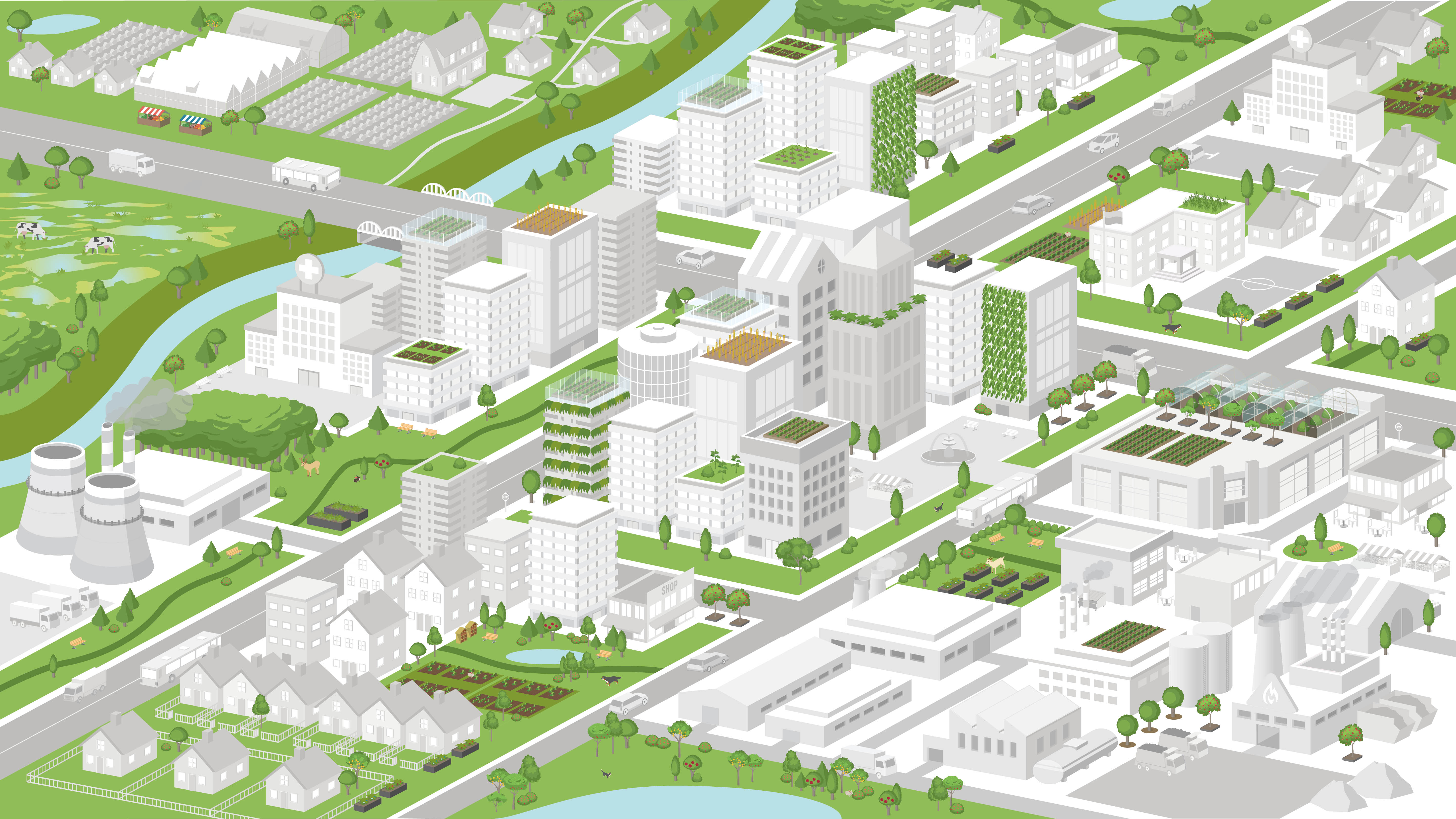
What shifted our understanding of how to live together with other species and the planet?
Our world woke up to the fact that nature and cities have never been, and could no longer be thought about as, separate systems. As Timothy Morton argues in Ecology without Nature, we have collectively scrapped the concept of “nature,” finally realizing that we are in a codependent relationship with the rest of the planet and that our very well-being relies on it. Popular culture responded by placing other species at the center of books and screens: trees in The Overstory, fungi in Entangled Life, and bees in Honeyland. David Attenborough's testimony was a tipping point that triggered a shift in consciousness for a broader audience, leveraging the multiplier effect of increased Netflix viewership as the world locked down during the global COVID-19 pandemic.
Practicing symbiotic stewardship
Today, in 2050, local and regional governments act as active stewards of the natural ecosystem. They constrain urban sprawl, leaving space for local ecosystems to thrive undisturbed. They have enabled our neighborhoods to become a constellation of habitats for multiple species, with butterfly gardens, beehives, and food forests. Rows of identical, ornamental trees no longer line our city streets. Now, a beautiful mix of native plants and trees fills our neighborhoods. We removed manicured grasslands or “grasphalts” that were often taken over by invasive populations of ducks, rats, pigeons, and free-roaming domestic cats at the cost of other species. Our focus on diverse greenery is not just more alluring now, but the native plants, wildflowers, and grasses also support soil health and water retention to create better habitats. The diversity has increased resilience, regenerated populations of insects, and increased happiness and public health.
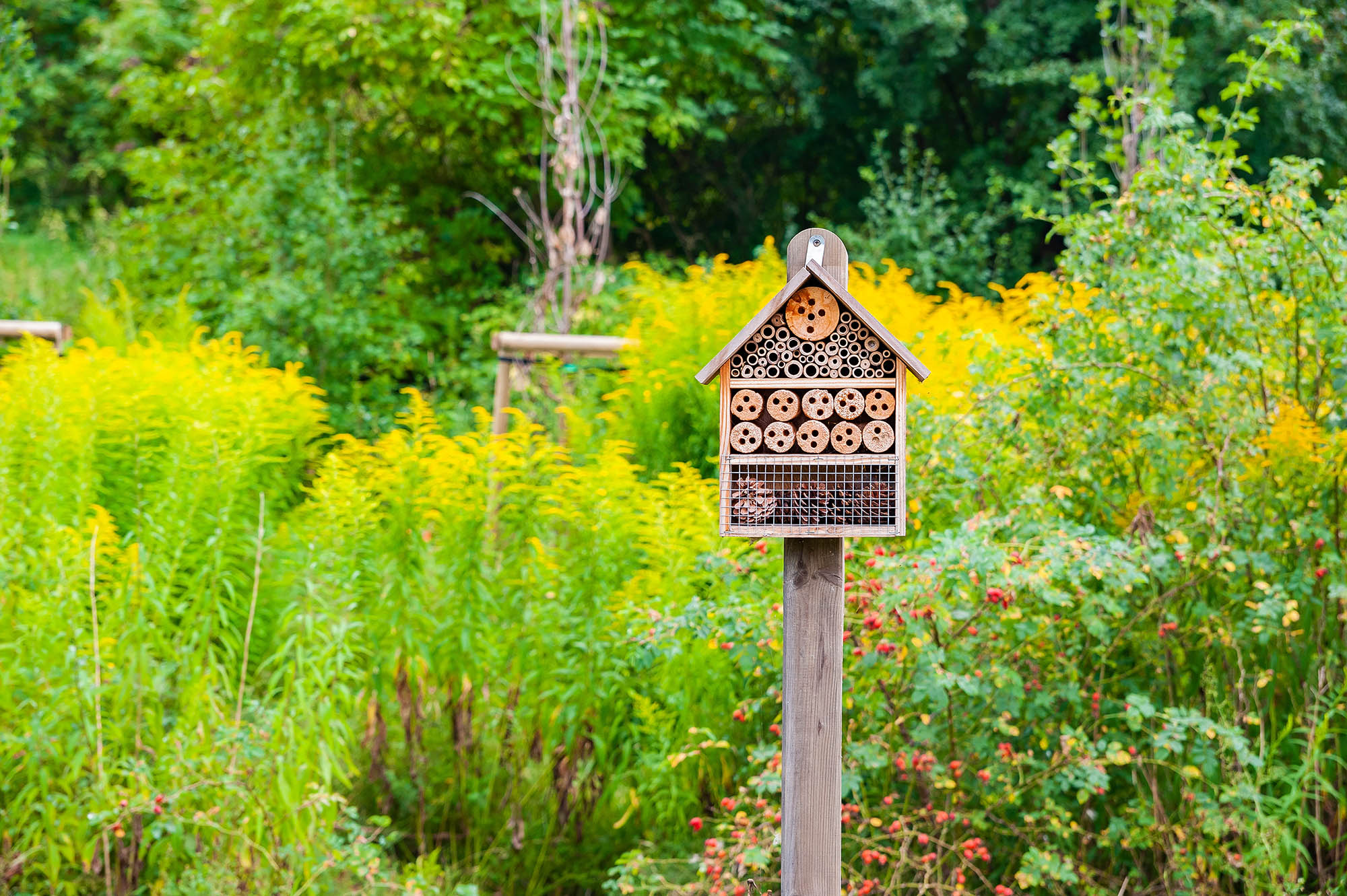
Globally, urban and regional governments adopted strategies to restore biodiversity. Costa Rica’s decades of protecting wilderness, restricting urban development, and rewilding urban parks showed us a way forward. Municipal governments now work together with the private sector and NGOs to develop smart funding mechanisms that support high-quality habitats. Pressures from the housing market are balanced with non-negotiable biodiversity standards in tendering guidelines and as prerequisites to apply for funding. Meanwhile, widely available urban design guidelines and blueprints help communities create the right ecosystems for their locations. Communities today have regained cooperative agency over their commons, maintaining and using them as gathering spaces, for growing local food, or just allowing them to be wild and overgrown.
Dense cities restore space and equilibrium
We live in dense, compact cities that are planned with the intrinsic understanding that we as humans need a habitat just as much as other species do. The local footprint of cities has increased to 5%, including some of the local ecoregions, but the reliance on land beyond the city limits has drastically declined. When people travel on the light rail out of the city, it is hard to pin down en route where exactly the city ends and where nature begins. Encouraged by successful efforts such as the reintroduction of threatened populations in Patagonia and the restoration of natural landscapes in Europe, municipalities shifted to an integrated natural urban system by restoring and maintaining much-needed forest cover and high-quality green spaces.
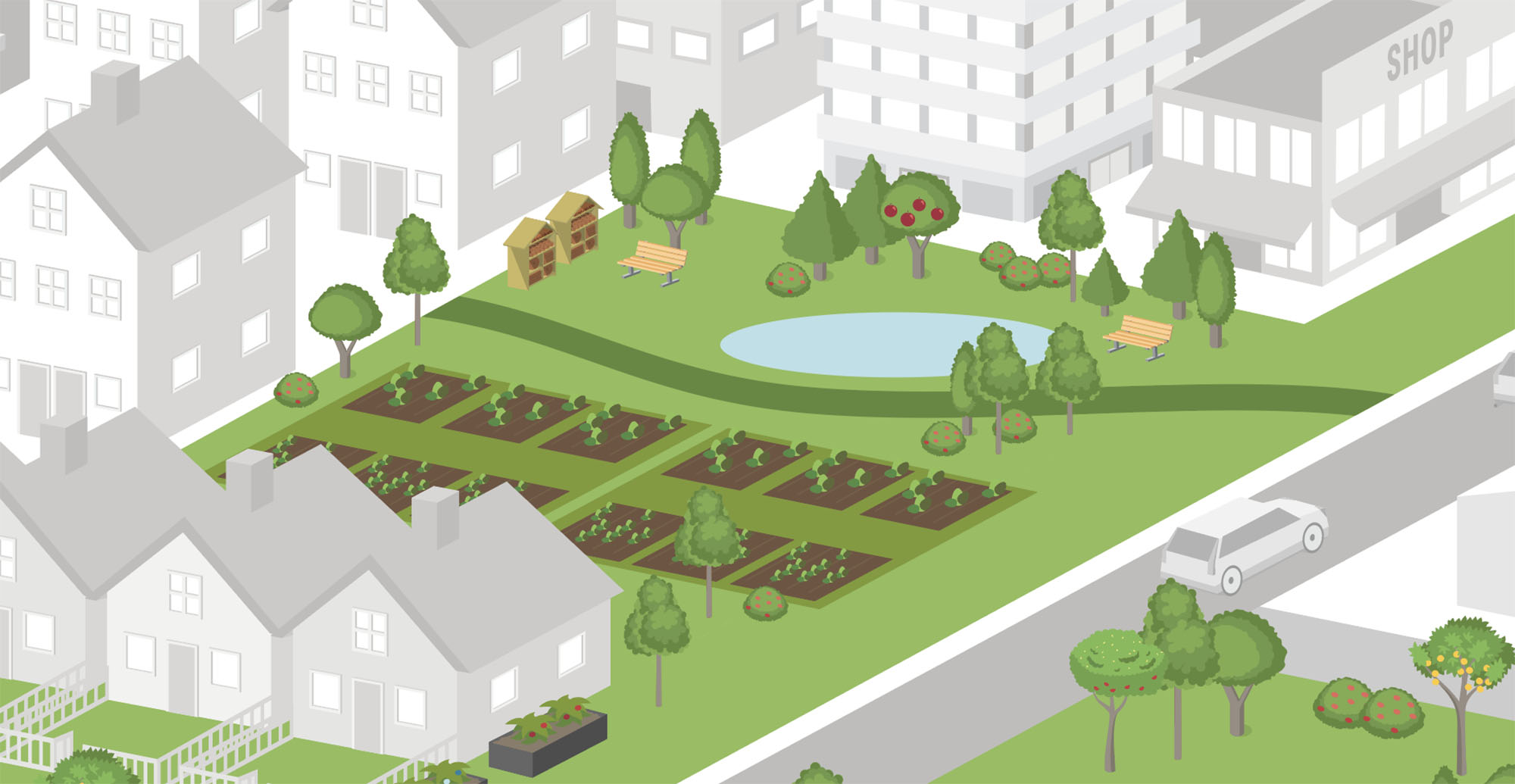
Many efforts have been taken to mitigate the effects of climate change, but the majority of our largest cities are still l
ocated in deltas, subject to extreme weather events and floods. We had to adapt to changing local climate conditions and take them into account when developing our neighborhoods. When inner-city rivers flood during extreme weather events, natural drainage channels guide the water out of the city. We are armed with smart planning and monitoring tools, while we are mindful of limitations in our ability to predict the future. Measures like Living Breakwaters, sand motors, and monitoring systems ensure resilience across scale, from individual houses up to entire regions.
Our municipalities rely on and work with natural ecosystem interactions to create well-being across cities. The tree canopy draws carbon from the air, storing it in roots and providing shade for the entire city; quality urban soils hold water and provide fertile ground for plant growth in neighborhoods. The integrated green spaces we live in promote social cohesion for local communities.
Today, we truly enjoy our shared landscapes. Being closer to nature has improved happiness and general public health, resulting in a massive decline in health care costs across the globe. It is easy to visit our mountains, shrublands, and forests, whether to hike, to swim, or simply just to be there. Living with other species, interconnectedly, and allowing space for heterogeneity of populations created the resilience we needed.
Explore more of our vision for the cities of 2050:
- The interconnected city: Imagining our urban lives in 2050
- The interconnected city: A nature-inclusive city allows species to thrive
- The interconnected city: Interconnected communities vital to healthy cities
- The interconnected city: Reconnecting to resources brought our operations within planetary boundaries
